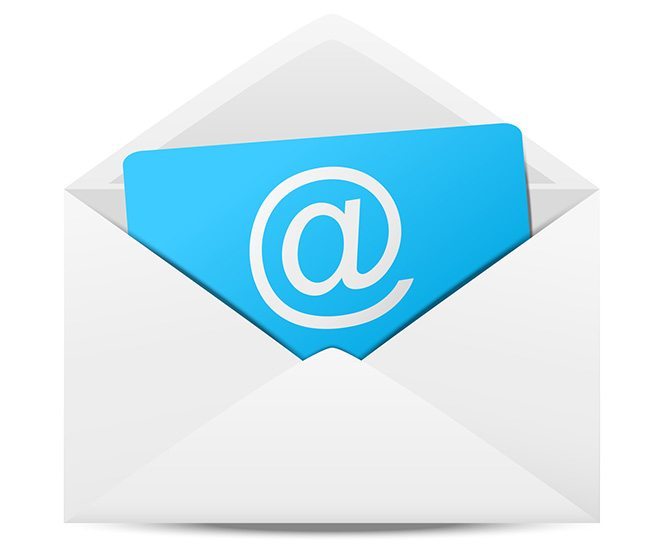6 Common Email Marketing Mistakes Small Businesses Make
Take Heed To These 6 Common Email Marketing Mistakes
If email seems a little old school to you, you’re right. Email turns 40 this year, and it’s being outpaced by texting, instant messaging and Facebook messaging. As Facebook CEO Mark Zuckerberg pointed out last year, email is too much of a “cognitive load” for younger people.
Yet you probably haven’t given up your Gmail account yet, have you? That’s because, despite the stigma of being a middle-aged technology, email is still useful and universally accepted. In fact, those who make a living from email marketing say there’s never been a better time to do what they do.
“Email marketing is getting more exciting because of some of the things you’re able to do with it,” says Chip House, vice president of relationship marketing at ExactTarget, “because of the ability to bake in social sharing. You can follow me on Facebook or tweet about this.”
For small businesses, email still represents a cheap, effective way to establish or maintain a relationship with clients. But there’s the rub. While the medium is fairly neutral-to-positive, the content has the power to either attract or repel. So before you hit “send” on your next batch email newsletters, take heed of these six common email marketing mistakes.
Six Common Email Marketing Mistakes
1. Emailing Without Permission
Getting an email newsletter that you didn’t sign up for feels like an invasion of privacy. As House notes, small businesses often start their email marketing campaigns by buying a list and then hitting everyone on that list. “There’s probably not a worse thing you can do,” he says. “You get started off on the wrong foot, and people expect to start receiving spam from you.” The moral? Don’t take shortcuts (even expensive ones). Build up your list organically by having an opt-in form on your website or, if you have a brick-and-mortar business, using a sign-up sheet.
2. Having Ineffective or Irrelevant Subject and “From” Lines
You can’t guarantee that someone will open your email, but a good way to make it unlikely that they’ll open it is to use a boring subject line. Mark Schmulen, a general manager at Constant Contact, says a subject line should promise short, digestable information that is likely to be of interest. One example: “2 Things Facebook Can Do to Help Your Business.” The reader only has to worry about reading two things and, if the email is properly targeted, there’s a good chance he’ll click through to see what it’s about.
The “from” lines are also important. Schmulen points out that few people are likely to open an email if they don’t recognize the sender. Plus, make sure you use an email address that uses your company’s domain — a Gmail or Yahoo address is a tip-off that the company is small-time, he says.
3. Blasting Irrelevant Content
Make sure your emails are relevant to the audience you’re blasting them to. Suppose you have a family and you signed up to get email from a travel firm. If you get a few emails with information about singles vacations, it’s not only going to be irrelevant to your needs, but it’s likely to sour you on the company, too. At that point, Schmulen says, “even if the fourth one is for families, you’re already checked out.”
4. Not Looking at the Numbers
You just sent out a batch of emails — any idea how many were opened? How many bounced back? If you don’t have that information, you’re operating in a vacuum and have no way to determine if the program is a success. Make sure you’re analyzing and comparing the numbers, which can help you get the most out of future email blasts. Metrics can provide useful information to boost email marketing efficacy, including the best day and time to send the email, the most effective subject lines and the content that most resonates with your audience.
5. Having No Purpose
According to Schmulen, many people start an email marketing program with only a vague notion about why they’re doing it. “They haven’t really thought about what their true goals are or what’s in it for the subscriber,” he says. So what are your goals? To educate? To start a dialogue? To inform your consumers of news and events in the industry? Having a purpose will dictate your content, so figure it out before you start typing.
6. Providing No Entry for Dialogue
House says that a good email is like a good tweet or a good blog entry — if people like it, they will pass it around. So to maximize the chances that your message will be shared, write provocative and interesting content. And don’t be afraid to ask your readers for their own content. “It’s important to state your point of view,” House says, “but you should ask readers to share their thoughts, too.” A good conversation sparked by an email marketing campaign can easily go online and manifest on Twitter and Facebook.
Source: Marshable
More Email Marketing Information and Other Latest News
You can read more email marketing tips and other latest news to improve your business inside our communication, latest news, online marketing, social media and starting a business blogs.
 English
English

Comments